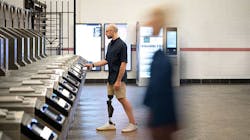Visa study shows one year, one billion tap-to-pay transactions: a turning point for public transit
Visa’s recent Future of Urban Mobility survey found that 91 percent of riders expect public transit to offer contactless payments, and nearly a third cited contactless payments as a top feature that would entice them to use public transit.
According to the same study, most public transit riders (88 percent) say sustainability and the environment factor into how often they use public transit, with most employed commuters (62 percent) using public transit at least three days per week.
Tap-to-ride technology, which allows riders to tap their existing card or mobile wallet to pay for their fare, is more convenient than having to carry exact change or worry about keeping a metro card topped up. Visa says it has helped enable contactless transit payments in cities worldwide, from Bangkok to Mexico City to Rio and beyond, while supporting more than 550 urban mobility initiatives since launching tap-to-pay technology on transit in 2011.
The rapid growth in digital payments serves as proof for how attractive this option has become for consumers. For the first time ever, Visa says its network has processed more than one billion tap-to-ride transactions on global transit systems in 10 months. Europe accounts for the largest share of those transactions, including more than four million a day on Transport for London’s (TfL) system alone, but every single region is growing; with North America already accounting for approximately one in five contactless taps on transit. Contactless payment technology has proven to offer positive ROI for transit agencies, on top of giving customers convenience and flexibility.
The same underlying contactless technology also supports Visa Prepaid and Private Label cards, which extend digital ticketing to all transit users, regardless of their financial standing or whether they have access to a bank account, playing an important role in driving financial inclusion around the world.
Visa is working with cities, urban planners, transportation authorities, operators and solution providers to reimagine the urban travel experience with a focus on inclusive, sustainable and interconnected multi-modal transportation. Through the Resilient Cities Network, Visa says it has partnered with a number of Latin American and Caribbean cities to co-develop digital solutions to address their unique challenges.
Visa is also working alongside the World Economic Forum’s Global New Mobility Coalition initiative, which is striving to better understand challenges and solutions to create a shared, connected and decarbonized mobility ecosystem. The team recently looked at the impact innovation in fare payment can have on sustainability.
For the past 60 years, Visa says it has partnered with government agencies to transform the way people transact, commute and grow to advance economies and uplift communities everywhere. Revolutionizing the way everyone, everywhere can pay their transit fares every day is the latest way it's helping to get it done.
To learn more about Visa’s global urban mobility initiatives, please visit Visa’s Global Urban Mobility page, and learn more about Visa’s Future of Urban Mobility Survey here.
